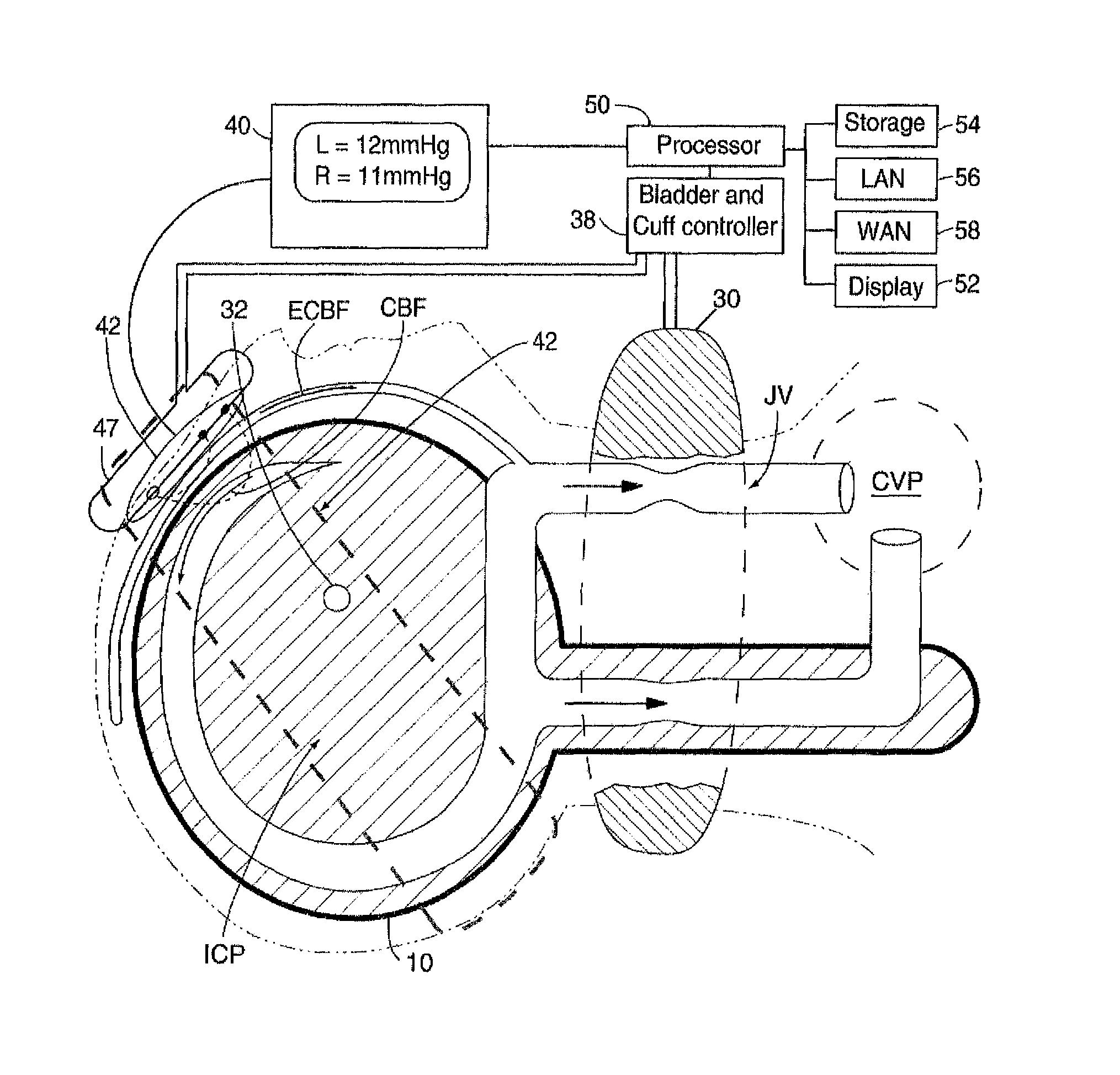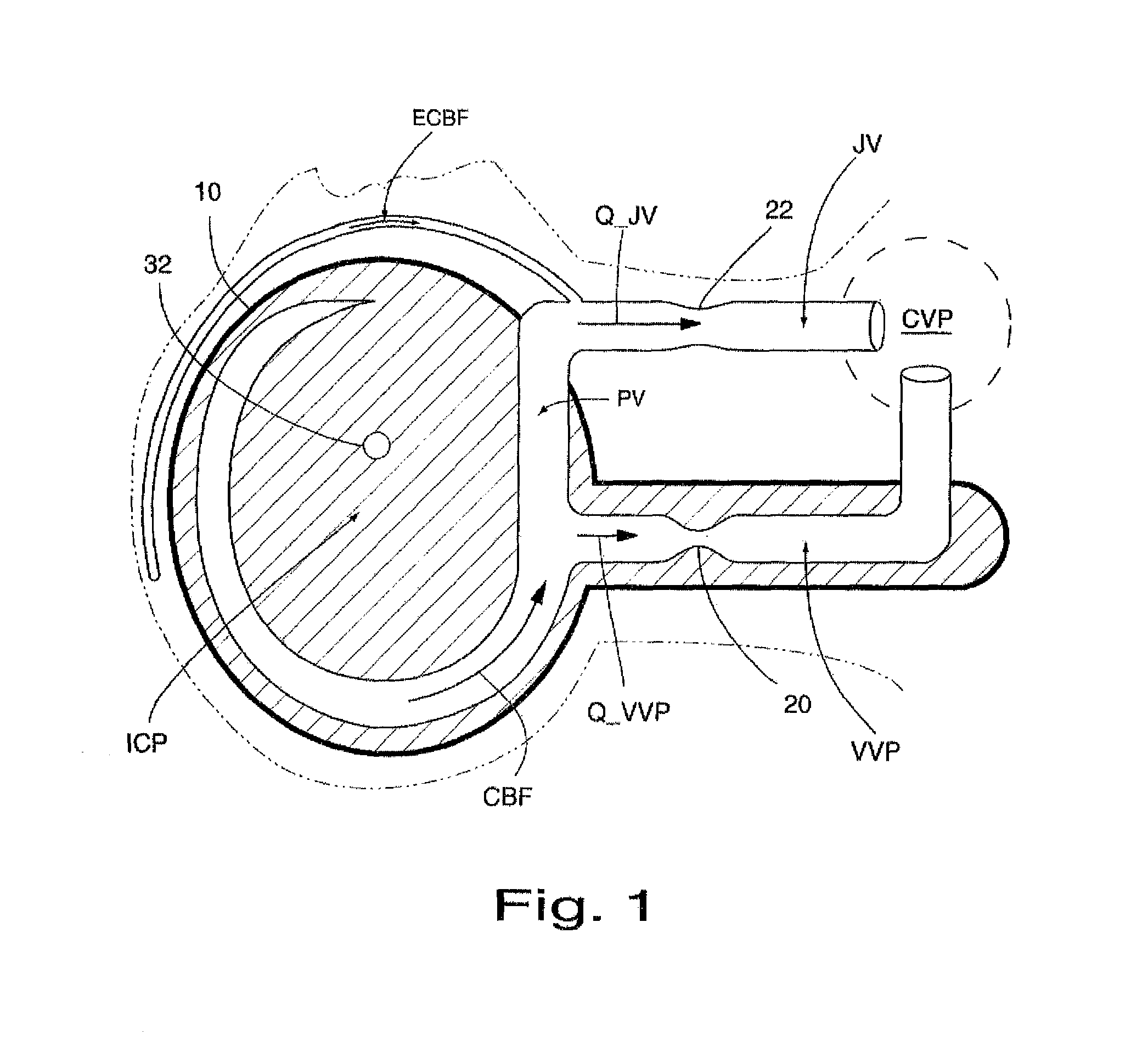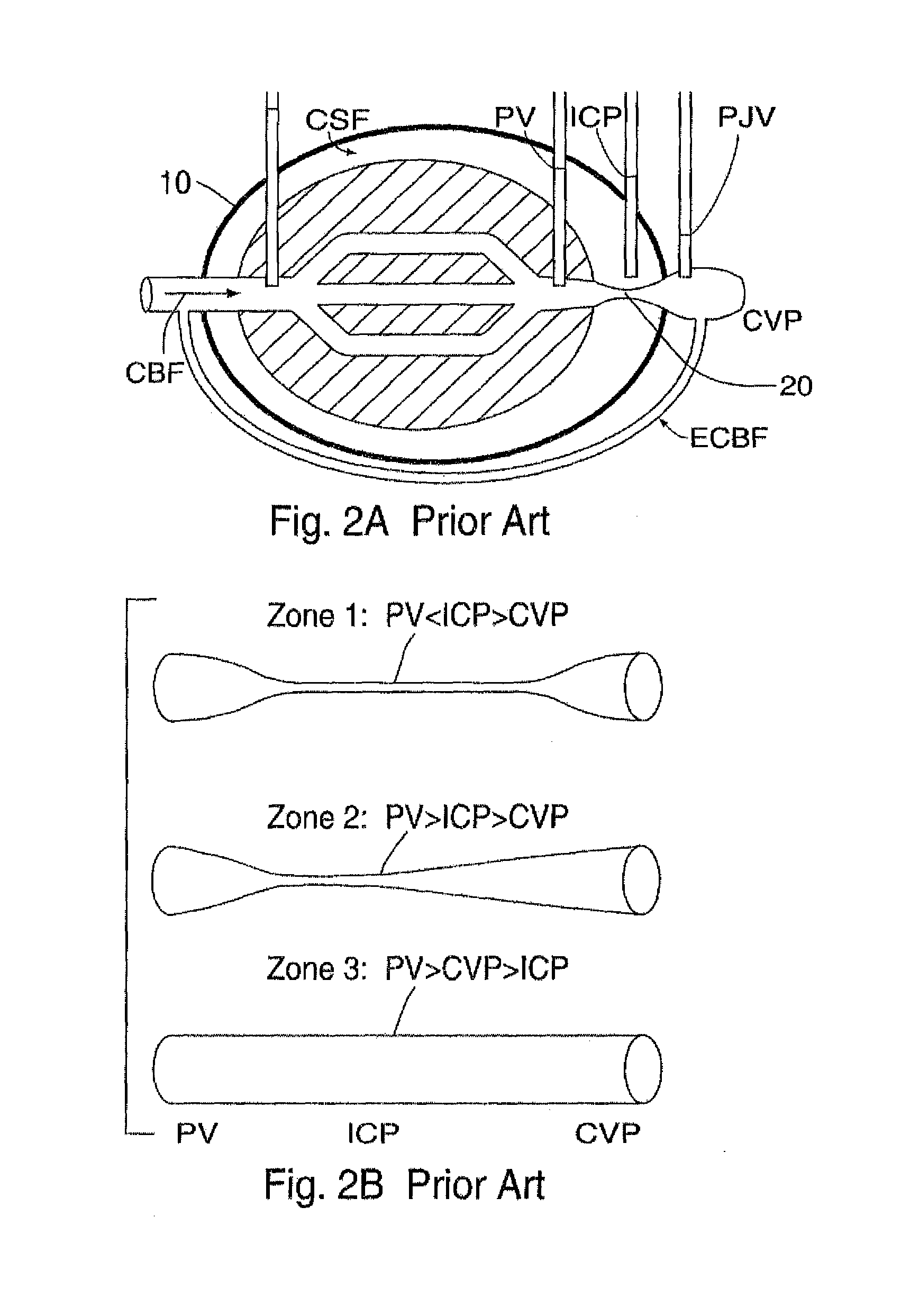Noninvasive method to measure intracranial and effective cerebral outflow pressure
a technology of intracranial pressure and measurement method, which is applied in the field of non-invasive measurement and monitoring of the absolute value of intracranial pressure, can solve the problems of varying degrees of invasiveness, brain damage and infection, and the automatic regulation system is often non-functional, so as to minimize brain exposure to high-intensity acoustic energy and facilitate the effect of performing
- Summary
- Abstract
- Description
- Claims
- Application Information
AI Technical Summary
Benefits of technology
Problems solved by technology
Method used
Image
Examples
Embodiment Construction
[0048]The following is a detailed description of example embodiments of the invention depicted in the accompanying drawings. The example embodiments are in such detail as to clearly communicate the invention and are designed to make such embodiments obvious to a person of ordinary skill in the art. However, the amount of detail offered is not intended to limit the anticipated variations of embodiments; on the contrary, the intention is to cover all modifications, equivalents, and alternatives falling within the spirit and scope of the present invention, as defined by the appended claims.
[0049]The invention provides method and apparatus for detecting and measuring increased global or local intracranial pressure (ICP) (both invasively and non-invasively) as well as whether ICP or CVP determines effective cerebral outflow pressure. The theoretical basis of the invention has a theoretical basis in an intracranial model based on the Starling resistor; Luce, J M, Huseby, J S, Kirk W, Butl...
PUM
 Login to View More
Login to View More Abstract
Description
Claims
Application Information
 Login to View More
Login to View More - R&D
- Intellectual Property
- Life Sciences
- Materials
- Tech Scout
- Unparalleled Data Quality
- Higher Quality Content
- 60% Fewer Hallucinations
Browse by: Latest US Patents, China's latest patents, Technical Efficacy Thesaurus, Application Domain, Technology Topic, Popular Technical Reports.
© 2025 PatSnap. All rights reserved.Legal|Privacy policy|Modern Slavery Act Transparency Statement|Sitemap|About US| Contact US: help@patsnap.com



